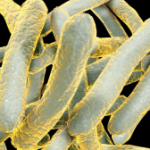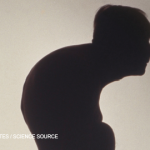
Monkey Business Images/shutterstock.com
A 50-year-old man with history of superficial bladder carcinoma presented to our rheumatology clinic for a three-year history of symmetric polyarthralgias. He had undergone multiple transurethral resection of bladder tumor procedures and bacillus Calmette–Guerin (BCG) treatments.
Prior to receiving BCG, he was fully functional and employed. Days after receiving his second BCG treatment, he developed arthralgias in his fingers, hands, wrists, low back including sacroiliac joints, knees, ankles and feet, which persisted. Of all of the joints involved, his knees affected him the most. The pain was so disabling that he lost his job and a great deal of his functional ability. He also suffered from insomnia secondary to pain. He complained of a dry mouth, but had not had conjunctivitis or uveitis. He himself felt that the arthralgias were related to the BCG treatments due to the temporal relationship of receiving these and the onset of his symptoms. ANA and RF had been checked by his primary care physician previously and were negative.
On physical examination, he had no active joint swelling, but he reported that his fingers and knees would intermittently swell and become acutely painful. He walked with a cane and had difficulty getting to the exam room unassisted. He had no active synovitis, but was tender to palpation of the bilateral MCPs, knees and right metatarsal heads. His right sacroiliac joint was tender to palpation.
Discussion
The spondyloarthropathies, including ankylosing spondylitis, psoriatic arthritis, inflammatory bowel disease-associated arthritis and reactive arthritis, are characterized by an asymmetrical oligoarthritis with non‑articular features, such as dactylitis, uveitis and enthesitis, as well as sacroiliac joint and lumbar spine involvement. Reactive arthritis typically occurs after a genitourinary or gastrointestinal infection, most commonly with Chlamydia trachomatis. The typical clinical picture is an asymmetric oligoarthritis with associated conjunctivitis, urethritis and arthritis.
Reactive arthritis can be difficult to distinguish from seronegative rheumatoid arthritis, but the former tends to have a predilection for joints below the waist, typically affecting knees and ankles asymmetrically; however, 50% of patients can have upper joint involvement as well. The presence of lower back pain that is worse at night with radiation to the buttocks is present in about 30% of patients with reactive arthritis. Seronegative rheumatoid arthritis typically presents with a symmetrical polyarticular involvement and has a predilection for the cervical spine rather than the lower back region.1
Reactive arthritis secondary to intravesical BCG is a rare, but well-recognized, condition. A systematic review by Bernini et al from October 2013 found 73 papers and 112 total patients with this condition reported in the literature worldwide. They looked at 61 of these papers and 89 of these patients, of which 73 were male and 16 female. Fifty-five percent (55.1%) of these patients had polyarthritis, and of these, 51% were symmetric; 37% had oligoarthritis, and of these, 33.3% were symmetric; 7.9% had monoarthritis; 59.6% of the total patients had an asymmetric distribution of their arthritis. The knee and ankle were the most frequently involved joints, and 42.6% were HLA-B27 positive. Over 70% (70.5%) of the patients recovered from their arthralgias within two months, and 93.2% recovered within six months. The development of a chronic form (lasting more than six months) of the arthritis was rare, occurring in 6.8% of the patients.2
Typically, nonsteroidal anti-inflammatory drugs (NSAIDs) and corticosteroids are the treatments of choice for BCG-related reactive arthritis. Bernini et al found that NSAIDs and corticosteroids were used, alone or in conjunction with other drugs, in 65.1% and 40.4% of cases, respectively.2
Neumayr and colleagues put forth a case report in 2002 on a patient with chronic reactive arthritis related to BCG, and found that the patient had no response to NSAIDs and only a partial response to glucocorticoids. The patient was given isoniazid for three months and had complete resolution of their symptoms. They suggested that, in cases of BCG-related reactive arthritis that do not respond to NSAIDs and glucocorticoids, anti-tuberculosis treatment is indicated.3
In 1986, Lamm et al stated that most of the side effects of BCG could be avoided by giving isoniazid for three days, starting on the first day of BCG treatment.4 Animal models, however, showed a reduction in the immunological effect of BCG when isoniazid was given with it.5 This brings up the obvious question of whether isoniazid decreases the side effects of BCG simply by decreasing BCG’s overall effects via the immune system.
Converse to Neumayr and colleagues, Tinazzi et al recommend immunosuppressive agents, such as methotrexate or cyclophosphamide, if symptoms persist for months to years despite NSAIDs and glucocorticoids.6
The pathophysiology of reactive arthritis secondary to BCG is unknown, but is believed to occur via a process of molecular mimicry. Animal models have shown that arthritis can develop in a T cell-mediated fashion as a reaction to mycobacterial 65-kD heat shock protein, which was also found to have structural mimicry with a molecule that is cartilage associated and in joints. A similar mechanism may underlie the reactive arthritis seen after BCG administration.7 Other than HLA-B27 positivity, it is unclear what factors put people at risk of developing a chronic form of the arthritis like the one our patient developed.
Back to the Case
Our patient’s presentation is likely chronic reactive arthritis secondary to intravesical BCG given the temporal relationship of his symptoms to BCG administration, as well as the involvement of his low back, sacroiliac joints, knees and ankles, but seronegative RA is another possibility.
Despite the lack of active joint synovitis at the time of our evaluation, the acute onset of sacroiliac joint pain after receiving BCG supports the diagnosis of reactive arthritis. Additionally, his intermittent acute flares of joint pain and swelling also support this diagnosis, and it’s likely he was not in an acute flare at the time we evaluated him.
More consensus is needed regarding the proper treatment of the disorder in patients who do not improve with NSAIDs and/or glucocorticoids.
Key Message
Consider reactive arthritis secondary to BCG administration in patients who present with arthralgias after receiving this treatment. The treatment options for chronic reactive arthritis secondary to BCG need to be further studied, particularly in patients who don’t improve with NSAIDs and/or glucocorticoids.

Dr. Syed

Dr. Haritha

Dr. Jenkins
Derick N. Jenkins, MD, completed medical school at Dartmouth in 2011 and finished an internal medicine residency at Virginia Commonwealth University (VCU) in 2016. He now serves as a chief medical resident.
Josna Haritha, MD, completed medical school at the University of Alabama at Birmingham in 2013 and finished an internal medicine residency at VCU in 2016. She now works as a hospitalist at McGuire VA Hospital.
Huzaefah Syed, MD, joined the VCU faculty in 2012 as a rheumatology clinician–educator at the level of assistant professor. She completed all of her training at VCU School of Medicine and has a special interest in sarcoidosis and rheumatoid arthritis.
References
- Firestein GS, Budd RC, Harris ED, et al. Kelley’s Textbook of Rheumatology. 8th ed. Philadelphia: Elsevier Saunders, 2009; 1107, 1196.
- Bernini L, Manzini CU, Giuggioli D, et al. Reactive arthritis induced by intravesical BCG therapy for bladder cancer: Our clinical experience and systematic review of the literature. Autoimmun Rev. 2013 Oct;12(12):1150–1159.
- Neumayr C, Kirchgatterer A, Knoflach P. [Chronic reactive arthritis associated with Calmette-Guérin bacillus.] [article in German.] Dtsch Med Wochenschr. 2002 Sep 13;127(37):1886–1888.
- Lamm DL, Stodgill VD, Stodgill BJ, Crispen RG. Complications of bacillus Calmette-Guerin immunotherapy in 1278 patients with bladder cancer. J Urol. 1986 Feb;135(2):272–274.
- De Boer LC, Steerenberg PA, Van der Meijden PM, et al. Impaired immune response by isoniazid treatment during intravesical BCG administration in the guinea pig. J Urol. 1992 Nov;148(5):1577–1582.
- Tinazzi E, Ficarra V, Simeoni S, et al. Reactive arthritis following BCG immunotherapy for urinary bladder carcinoma: A systematic review. Rheumatol Int. 2006 Apr;26(6):481–488.
- van Eden W, Hogervorst EJ, van der Zee R, van Embden JD, et al. The mycobacterial 65 kD heat-shock protein and autoimmune arthritis. Rheumatol Int. 1989;9(3–5):187–191.


